The compounds of the human body bear the daily load, so they become sensitive to different types of destructive factors. Among the diseases of the joints is often an arthrosis and affects large and small joints. Arthrosis The knee joint is degenerative-dystrophic damage to the knee joint, in which its motor activity is disrupted. In the absence of proper treatment, the disease can lead to disability.
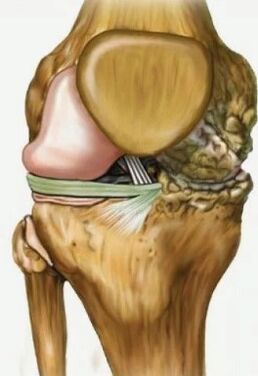
Since the disease causes characteristic joint deformities, it is called the deformation of the knee joint arthrosis, which rightly describes the typical feature of pathology. The disease is chronic and a woman is more often diagnosed, with surplus weight and venous pathologies of lower extremities, but there may be other causes. Because of age change, people also appear in older people.
Young Arthrosis can be provoked by injuries. As a result of degenerative dystrophic changes, cartilage is softened, delays and is covered with cracks of different depths. He then stops fulfilling his function.
Reasons
Different causes lead to the occurrence of deforming the arthrosis of the knee wrist. The traumatic factor is the usual cause of appearance. Post -Traumatic arthrosis can be developed due to the receipt of dislocation or fracture in the specified zone as well as the meniscus injury. Gontrose of the knee joint in young people who are actively involved in sports, ie the work whose work, is associated with increased mobility, lifting and weight transmission.
Few people know that such damage can be due to treatment, when injury is already cured, but during long-term immobilization of limbs in this area were limb disorders. That is why Gonarthrosis appeared.
Increased physical effort on the knee is one of the leading factors from the occurrence of the disease. Most often affects athletes who have a permanent active load on the knee. At a young age, arthrosis cannot appear, usually rapid changes begin after the cessation of physical activity.
There is also a risk of disease in these people who, even in adulthood, do not reduce the load on the joints. In such athletes, the risk of fractures and dislocations increases, microtrows appear. Therefore, after forty years, doctors recommend that the athletes reduce the burden, transition to work training. Running and squats are best excluded, because these types of activities are that most of everything loading the knee joint. Most often one limb is hit, and the left gonortiness or right gonorteness occurs.
The removal of the meniscus becomes an essential factor for the development of a joint knee arthrosis. If for some reason, the meniscies are removed, then that in 90 percent leads to an arthrosis - the so-called baking knee, during which articular joints experience more friction than usual.
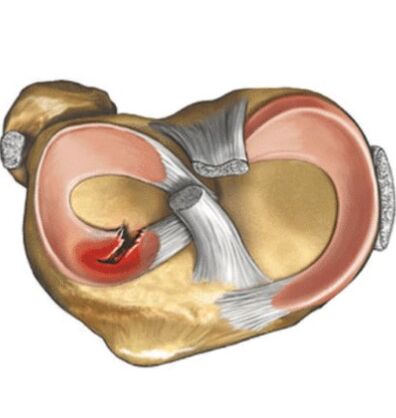
This is the case with a meniscus arthroscopy - tears - which can become a trigger for knee joint arthritis
The problem of excess weight is also relevant to people with arthrosis. Excess body weight creates unnecessary pressure on the joints. As a result, the cartilage itself is damaged, but meniscus. And with a combination of excessive weight, acute arthrosis threatens the varicose veins of the lower extremities.
The weak ligament apparatus in some patients is a congenital feature, and sometimes ligaments affect other diseases. In this way or another, the weak ligaments cause increased joint mobility, which is why the articulated surfaces are significant abrasion. The consequences of weak ligaments cannot be felt long as patients do not experience symptoms of true arthrosis.
Joint pathologies also lead to disease development. Most often, arthrosis becomes a guilt of arthrosis - inflammation of articulated compounds. Typical signs are noticed with arthritis - deterioration in the composition of sinovial fluid, pathological changes in cartilage, swelling, redness of soft tissues. Even after osteoarthritis, chronic processes lead to the occurrence of arthrosis.
Violations of metabolic processes often lead to the pathology of the musculoskelnim system. Bones and joints do not receive nutrients and minerals, so necessary for tissue strength. With their lack of bones and cartilage surfaces, they are subject to destructive processes, therefore, even with a slight burden, the primary arthrosis appears.
Symptoms
The knee wrist arthrosis is manifested by the complex of characteristics that are difficult not to notice. There are no signs only in the first degree of development of pathology, but the second and third degree gives clear symptoms of the joint knee arthrosis:
- Pain is one of the key characters that is not manifested by Rhinestone. It is interesting that with the development of arthrosis, pain cannot feel even a few months or years until the disease gets worse. Typically, the first signs of pain are discomfort in physical effort, walking or running, but it also manifests when the meniscus is muffled. In the second degree of arthrosis, the pain in the joint feels stronger, and the third degree of development, pain sensation appear even at rest. Attacks worsen even after short walks without heavy load on the joint, so patients try to spare their knees;
- Deformations - Events become increasingly pronounced in the third phase of the development of arthrosis. The knee will keep its usual shape, but it looks a little swollen, swollen. When joining arthritis, the knee becomes red, it will become hot and painful to touch;
- Cryst with arthrosis appears in the second and third degree of disease development. Crispy sounds vary from healthy clicks, which can sometimes be heard when extending and bend your knee. With arthrosis, symptoms are characterized by dry, rude sound that is suddenly happening and monitored with pain;
- Synonitis is an accumulation of a certain amount of liquid in the common cavity. He is also located there. But the accumulation of excess amount leads to the development of a cyst - a baker cyst, which can be determined in the exposed position of the leg, is the most important thing;
- Limited mobility in the knee is a typical sign of pathology, because patients are first trying to protect against pain consciously, and at the late phase of arthrosis, they cannot bend a limb at all. In the third degree of development, the deformation of the osteoarthrosis of the common knee (DOA) even leads the loss of movement. Patients adapt to movement on bent legs, using support products.
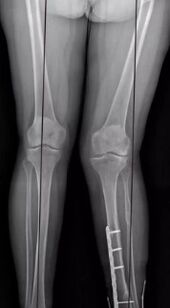
Development degree
The arthrosis of the knee wrist takes place in its three-degree development.
With first-degree arthrosis, painful pain and occurs only by active physical effort on the knee joint. Already in the first extent, the liquid in the cavity can be accumulated, which is in the second and third already clean. With progress, the pain occurs in the process of movement, but it passes quickly. Exterior, the deformation of the knee joint is invisible, so it can be a difficult diagnosis of the arthrosis of the knee joint.
The effective pain occurs even when external signs of the disease are not noticeable
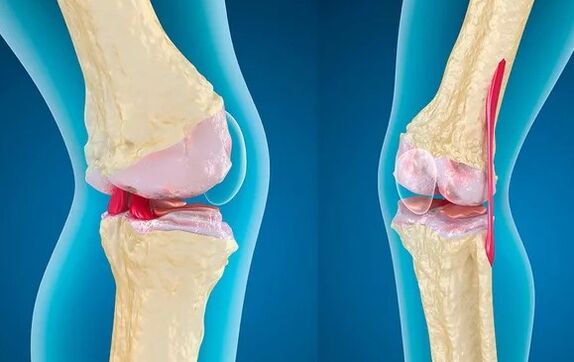
With the illness of the second degrees, damage to the cartilage of tissues is more important. If you take X -Ray, then the stage of bone growth is placed on it. With any movement in the knee, an acute sudden pain appears, but, returning to a suitable position, the knee no longer hurts. In the second phase doo you can hear Grukka typical for arthrosis. In progress, problems with the extension and flexion of the knees are difficult. Deformation becomes noticeable in appearance.
The osteoarthrosis of the knee joint in the third degree is characterized by a significant thinning of the cartilage. Gradually, the cartilage is so soaked that the bone is exposed in some areas. The X -Ray painting shows a significant amount of osteophytes - the growth of bones, salts that appeared in the shared cavity. The exterior changes are clearly visible, and the patient deals with constant pain. It is easy to make a diagnosis - there is enough visual examination and the Retigene control is performed.
With the advancement of this degree, arthrosis can lead to a complete loss of functionality. In any degree of pathology development, the osteoarthritis of the knee joint can be joined.
Treatment
Conservative
A group of most active drugs against arthrosis is non-steroidal anti-inflammatory drugs. These are primarily cyclookoxigenase-2 inhibitors, can perfectly mitigate inflammation, swelling and contribute to a speedy recovery. These drugs have significant restrictions so they cannot be used without a doctor's recommendation. For example, they can worsen the ulcer on the stomach, heart disease and the urethal bodies of pathology. No-person-free anti-inflammatory drugs are prohibited for during pregnancy.
Another group of funds is hondroprotectors that improve cartilage characteristics. They are used for arthrosis for renovation of the correct cartilage structure, as in the process of resolution, it loses very important components - hondroitin and glucosamine. Therefore, almost all hydroprotectors have both of these substances, but some medications are one -component. With the help of these medicines, you can help the patient in the first and second phase of disease development, but not in the third, when non-refundable changes have occurred.
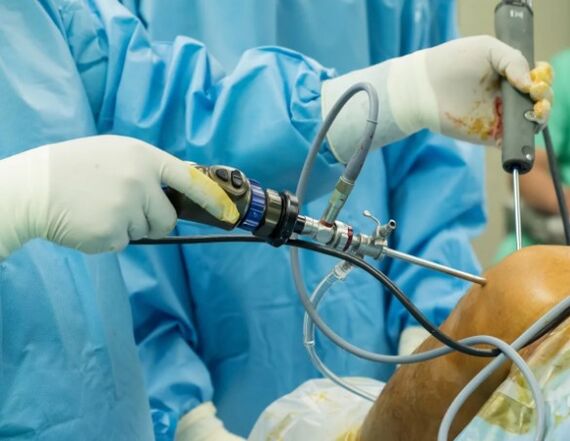
During the conservative therapy, the doctor will give the recommendations for nutrition. If the patient or patient has excessive weight, it is necessary to adhere to the weight normalization diet. How to strengthen stable weight - the doctor will also say. It is also not recommended to eat a lot of salt, but it is better to fill in the diet with calcium, vitamins and minerals. Jelly, Jelly, will be useful.
Operative
The most common type of surgical intervention for arthrosis is arthroscopy, but other interventions are carried out. Treatment Arthrosis Knee joint is usually done in the second and third degree, when conservative therapy no longer helps.
If necessary, minimally invasive intervention, for example, when accumulating the liquid in the knee joint, it is possible to do with a breakthrough. In the cavity of the knee joint, a break was made and excess fluid was drawn. This method can be diagnosed with disease, so that it is applied at the same time for treatment. The liquid is taken in the initial stage in the minimum amount, but it already significantly improves patient benefits. Then after studying biomaterials, another part removes, and corticosteroids are introduced into a common cavity.
EndoProsthetics is sometimes the only one output for patients with a third degree arthrosis
Arthroscopy is most often. Through a small cut in the skin, several tools are introduced, which allows you to make a shared review and necessary manipulation in it. With the help of arthroscopy you can remove fabric particles that are separated from cartilage, but there is always a risk that secondary gonartrosis will appear.
In addition to serious damage, there is a need to perform periodic nonsense osteotomy. This is a greater effect on the compound, as a result it is a little fed and built into the right angle. After surgery, rehabilitation is longer, but the effect lasts longer.
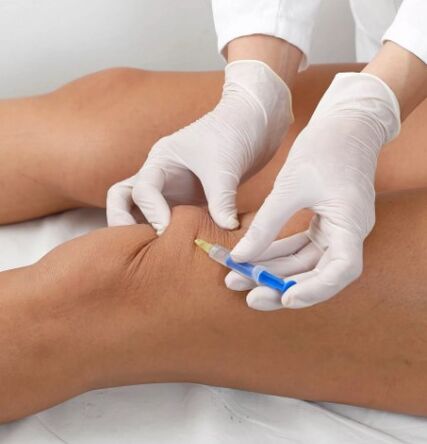
Significant destruction of articulated elements leads to full immobilization of limbs. Shared does not fulfill its function, which means that you need to be replaced and you need to work surgery. EndoProsthetics The joint of the knee is an expensive operation, but one that allows the return of the Patient Motion to the UD. Various knee prostheses - plastic, ceramics or metal have been installed. These are durable structures that allow you to forget about the problem for several decades.
Physiotherapy
Physiotherapy methods can only be used when an acute period has passed and the patient is recovering.
Among the techniques are actively used:
- Ozonotherapy is an effect on the affected ozone blend, and the substance can be introduced in injection or applying as an external treatment. This type of help patients is very effective, so it is often used in the treatment of different pathologies, including arthrosis. Treatment allows you to activate blood circulation in the problem area, in order to achieve anti -infalmatory and analgesic effect. At the same time, glucocorticoid treatment is carried out;
- Kinesiotherapy - treatment is performed using a special set of exercises. The load is formed taking into account individual data, and special simulators that strengthen joints are used when performing exercises. The difference between kinesiotherapy and physiotherapy exercises in active effects not only on osteoarthritis of the knees, but also in the entire organism as a whole.
They use not only ozoneotherapy and kinesiotherapy, but also exercises physiotherapy. Good results are given copyright methods to eliminate knee arthritis - exercises in Bubnovski, Evdokimenko, Dikul. During the exercises and after them we must carry a special knee pad - orthosis, strengthen the right or left knee joint.



















